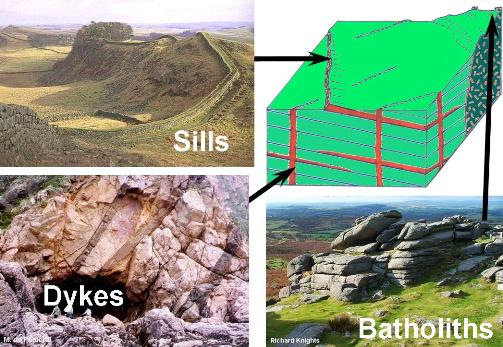
Sills:
form when magma intrudes between the rock layers, forming a horizontal or gently-dipping sheet of igneous rock. The Whin Sill (top left image) in N. England provided a defensive cliff-line on which the Romans built Hadrian’s Wall.
Dykes:
form as magma pushes up towards the surface through cracks in the rock. Dykes are vertical or steeply-dipping sheets of igneous rock. This example, (bottom left image) in the Channel Islands, shows several criss-crossing dykes of different ages.
Batholiths:
are large, deep-seated intrusions (sometimes called Plutons) that form as thick, viscous magma slowly makes its way toward the surface, but seldom gets there! Dartmoor (bottom right) forms part of a large batholith that extends under Cornwall and beyond.


